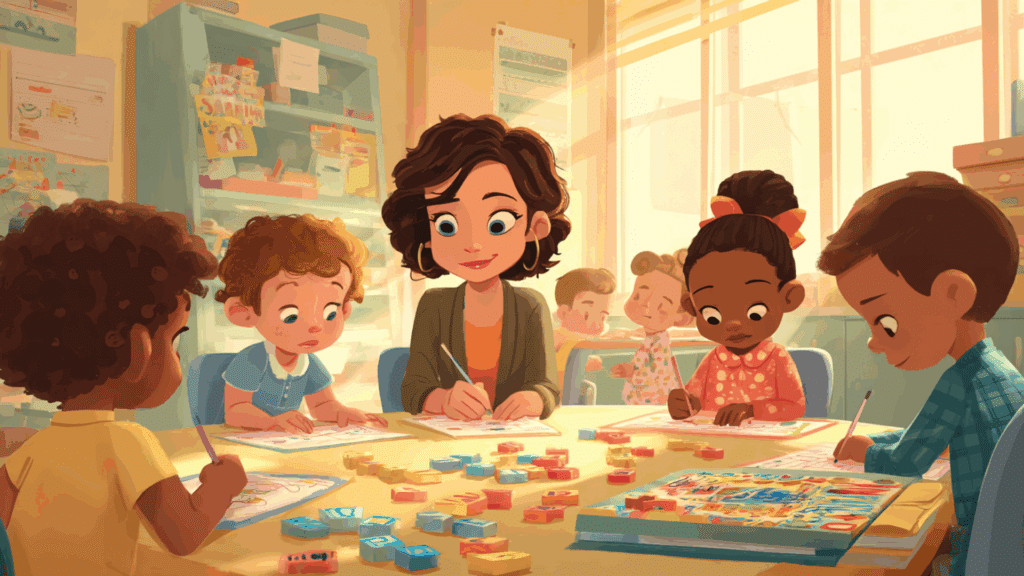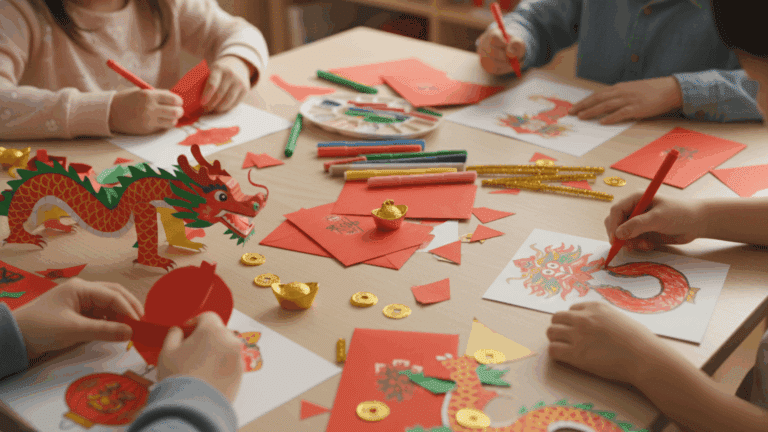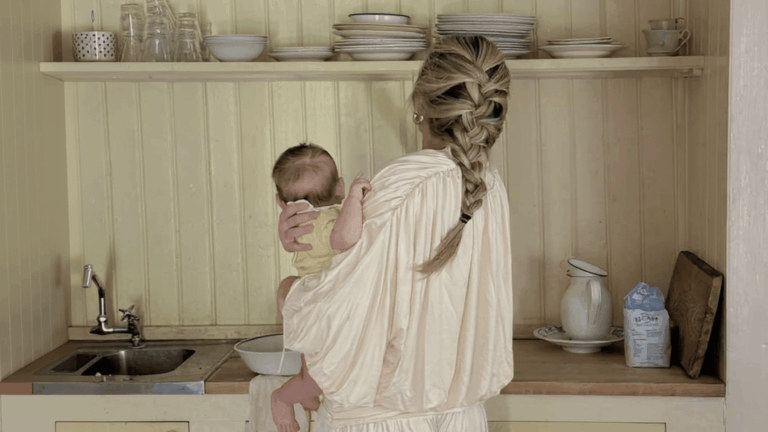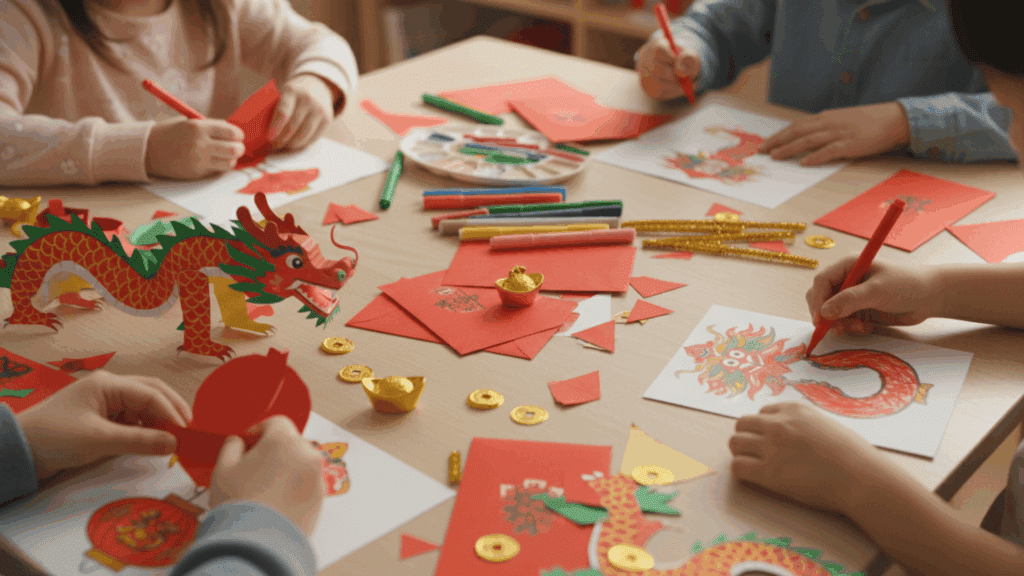Many parents and teachers worry when children misspell words or appear to regress in their spelling abilities.
They often don’t realize that spelling development follows predictable stages that all children naturally progress through.
Understanding these spelling stages will help you support young writers more effectively. You’ll learn to recognize standard developmental patterns and provide appropriate instruction for each phase.
This blog covers the five primary stages of spelling development, from pre-phonetic to conventional spelling. We’ll find what each stage looks like, common characteristics, and teaching strategies that work best.
What are Spelling Stages?
Spelling stages are predictable phases that all children pass through as they learn to write. Each stage exhibits distinct patterns in how children approach spelling words. These stages happen in order and can’t be skipped.
Children progress through five main stages of spelling development. They start with random letters and scribbles. They gradually learn letter-sound connections. Eventually, they master conventional spelling rules.
Each stage builds on the previous one. Skills develop slowly over time. Children may show characteristics from multiple stages simultaneously.
The Pyramid of Spelling Stages
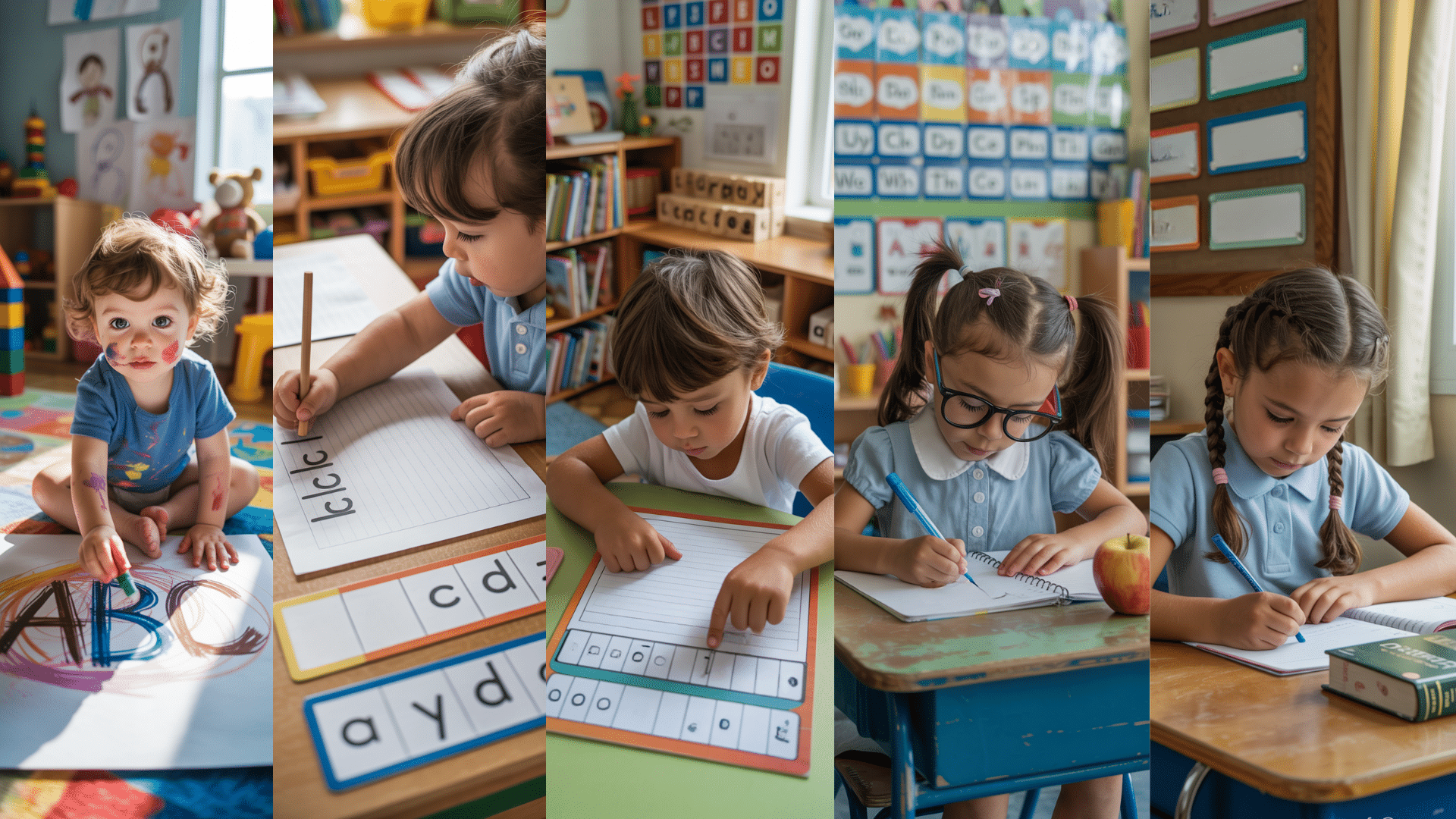
Spelling development follows a predictable sequence that reflects children’s growing understanding of letter-sound relationships and language patterns.
Each stage shows distinct characteristics in how children approach writing and spelling tasks. These stages overlap and progress at different rates for individual learners.
Stage 1: Pre-Communicative Writing
At this first stage, children use letters and symbols randomly. They know writing means something, but they can’t connect letters to sounds yet.
Young writers mix uppercase and lowercase letters freely. They might write backwards or in circles. Letters often appear upside down or facing the wrong way.
Children at this stage can’t read back what they wrote. But they understand that writing carries meaning. This is a huge first step.
Stage 2: Semi-Phonetic Attempts
Children start linking some letters to sounds. They usually pick the first sound they hear in words. A child might write “K” for “cat” or “B” for “ball.”
Letter names influence their choices. They write “Y” for “why” because the letter name sounds like the word. Children can often read their writing right after they create it.
Stage 3: Phonetic Spelling
This stage marks a big breakthrough. Children can hear and write most sounds in words. They spell words exactly as they sound.
Short vowel sounds become more reliable. Beginning and ending consonants appear correctly. Children might still struggle with blends like “st” or “tr,” but they’re getting better.
Stage 4: Transitional Patterns
Children start using spelling patterns they’ve seen in books. They make logical mistakes based on what they’re learning about language.
Silent letters begin appearing in their work. Children try double letters and common patterns. They self-correct more often when writing.
Stage 5: Conventional Mastery
Children can spell most common words correctly. They understand and apply standard spelling rules. They know some words have unusual spellings that need memorization.
Children at this stage can proofread effectively. They catch their own spelling errors and know when words don’t follow typical patterns.
Each stage builds on the previous one. Children need time and practice to move through these stages. It is recommended to celebrate progress at each level rather than rushing to the next stage.
Classroom and Home Activities That Align with Spelling Stages
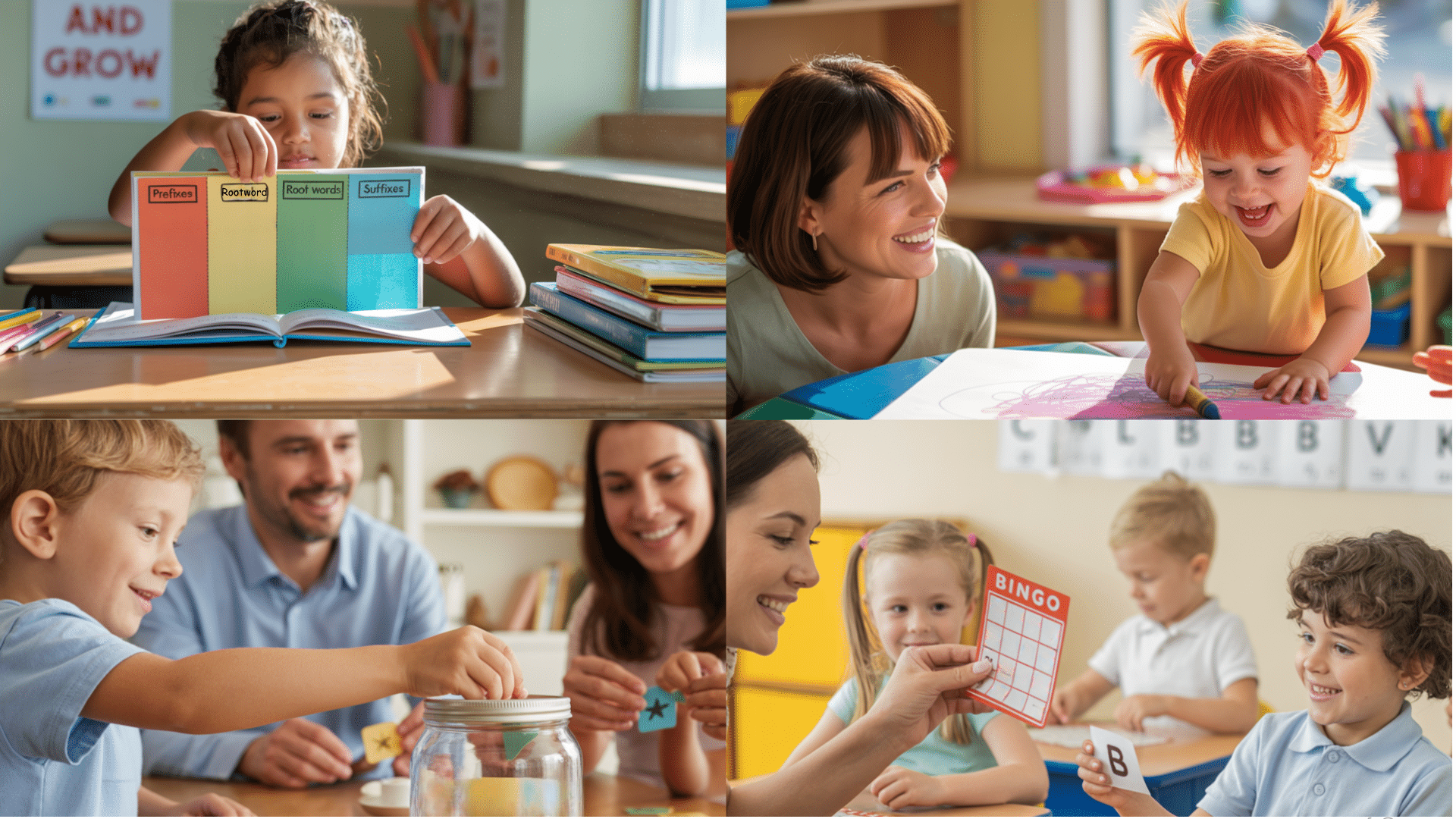
These targeted activities provide practical ways to support children’s spelling development at each stage through engaging, hands-on experiences.
Teachers and parents can easily implement these strategies using common materials while matching instruction to each child’s developmental needs and current spelling abilities.
1. Sound-Symbol Bingo
Children match spoken sounds to corresponding letters on bingo cards. The teacher calls out sounds like /b/ or /t/, and students mark the letter that makes that sound.
This activity strengthens phoneme-grapheme connections, builds early reading readiness, and creates a fun, engaging environment for auditory discrimination and letter-sound fluency.
- Best For: Semi-Phonetic Stage
- Materials Needed: Bingo cards, letter markers, sound list
2. Word Family Puzzle Race
Students race to complete puzzles that group words by common endings, such as -at, -ig, or -op. Each puzzle piece features one part of a word, encouraging students to blend onsets and rhymes.
It’s an energetic way to reinforce spelling patterns and phonics awareness in emerging transitional spellers.
- Best For: Transitional Stage
- Materials Needed: Word family puzzle sets, a timer, and reward stickers
3. Prefix-Suffix Flip Books
Learners create interactive flip books with prefixes on one flap, root words in the middle, and suffixes on the third. By flipping different parts, they explore how affixes change meaning and spelling.
This activity improves vocabulary, supports morphological awareness, and improves spelling accuracy through hands-on language exploration.
- Best For: Conventional Stage
- Materials Needed: Paper, scissors, markers, prefix-suffix lists
4. Scribble & Share Stations
Students freely scribble, draw, and “write” their thoughts using random letters and marks. They then “share” their creation with a teacher or peer.
This imaginative station fosters emergent literacy, builds confidence in expressing ideas through writing, and helps pre-communicative learners connect symbols to spoken words in a meaningful way.
- Best For: Pre-Communicative Stage
- Materials Needed: Blank paper, crayons, pencil grips, storytelling prompts
5. Fridge Letter Play
At home, kids use magnetic letters to stick on the fridge and form names, sight words, or simple sounds. Parents can call out a sound or word, and children find the matching letters.
This playful method promotes letter recognition, phonics understanding, and early word building in a natural setting.
- Best For: Pre-Communicative to Phonetic Stage
- Materials Needed: Magnetic letters, refrigerator surface, word list
6. Sing-and-Spell Song Sessions
Turn spelling practice into music by setting weekly spelling words to familiar tunes like “Twinkle Twinkle.” Kids sing while pointing to each letter, engaging both auditory and visual memory.
This activity reinforces spelling patterns, boosts retention, and makes practice feel like play, especially for musical or rhythm-loving learners.
- Best For: Phonetic to Transitional Stage
- Materials Needed: Song templates, spelling lists, printed lyrics
7. Family Word Jar
Each week, family members add new, tricky, or interesting words to a decorated jar. During meals or story time, a word is drawn and used in conversation.
This fosters vocabulary, spelling familiarity, and curiosity about language in a supportive home setting, making learning collaborative and an integral part of daily routines.
- Best For: Conventional Stage
- Materials Needed: Jar, index cards, markers, word list
Common Challenges that Occur During Spelling Stages
Teachers and parents often encounter specific obstacles when supporting children through spelling stages.
- Inconsistent progress – Children may show mixed characteristics from multiple stages simultaneously.
- Spelling anxiety – Fear of making mistakes prevents children from taking risks with writing.
- Overemphasis on correctness – Focusing too much on perfect spelling discourages creative expression.
- Lack of phonemic awareness – Some children struggle to hear individual sounds within words.
- Limited reading exposure – Insufficient contact with print affects spelling pattern recognition.
- Skipping foundational skills – Moving to complex patterns without mastering basic letter-sound relationships.
Conclusion
Spelling development is a natural process that unfolds predictably over time.
Each stage builds essential foundations for the next level. Children require support that aligns with their current developmental needs.
Teachers and parents should celebrate progress at every stage of a child’s development. Mistakes are normal and necessary for learning. Pushing too hard can create anxiety and resistance.
Use these spelling stages as guides for instruction. Provide appropriate activities for each level. With patience and understanding, all children can develop confidence in their spelling.


